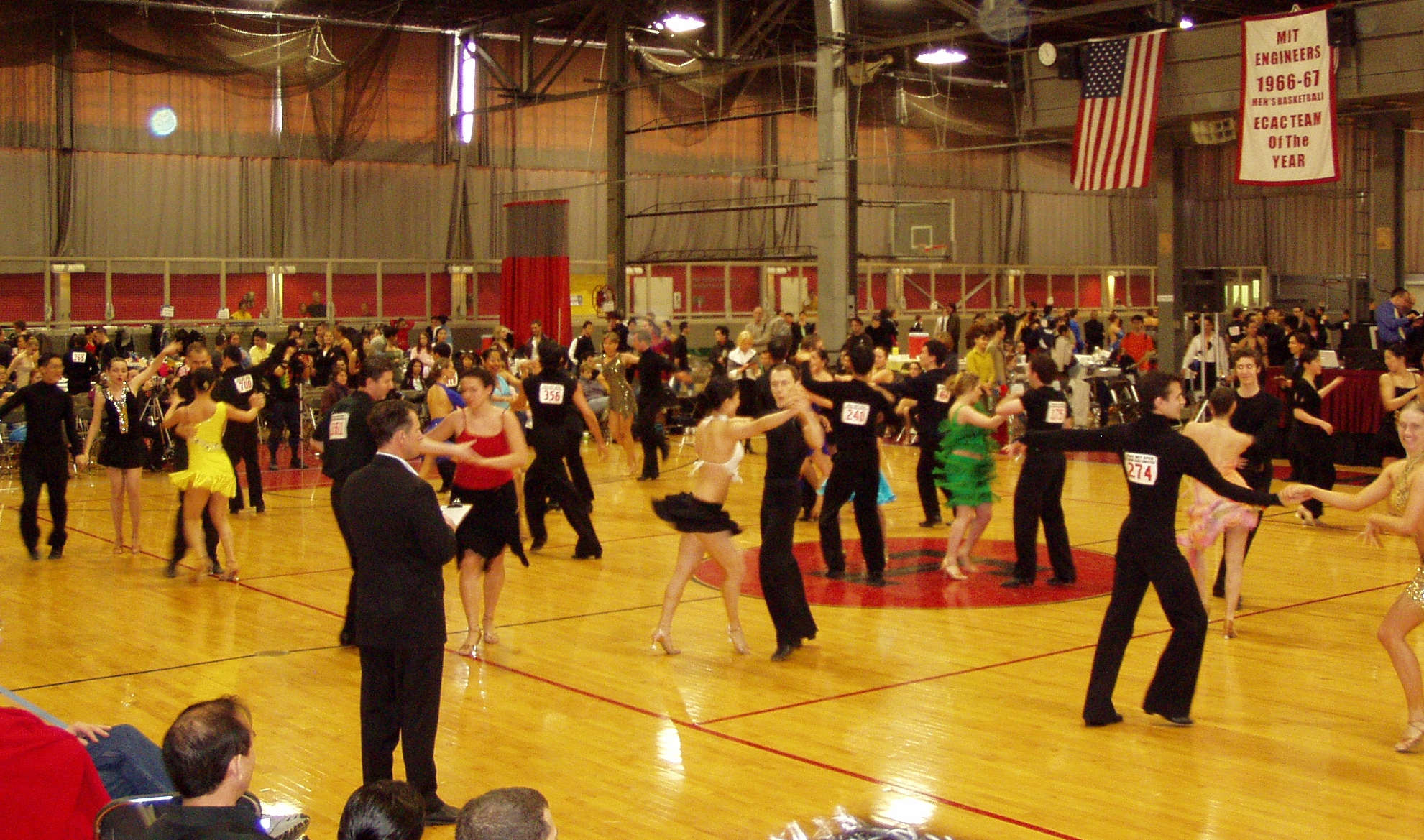Ballroom Dance Competition
From Londonhua WIKI
Ballroom Dance Competition
 | |
| Intermediate level Latin dancing at the 2006 MIT Ballroom Dance Competition, judge standing in foreground | |
|---|---|
| Credit: | Nathaniel C. Sheetz[1] |
Overview
Ballroom Dance Competitions, sometimes referred to as DanceSport, are organized and regulated competitions in which ballroom dancers perform for judges. Depending on the competition, finalists may win ribbons, cash, dance scholarships, or other prizes.
Format
Depending on the focus, a Ballroom competition might feature sections for any and all of the dances, from the Smooth/Standard styles to the Rhythm/Latin styles. These styles are broken down as follows[2].
- Smooth: Waltz, Foxtrot, Tango, Viennese Waltz
- Standard: Waltz, Foxtrot, Tango, Viennese Waltz, QuickStep
- Rhythm: Cha-Cha, Rumba, Swing, Mambo, Bolero
- Latin: Cha-Cha, Rumba, Jive, Samba, Paso Doble
Note that the Smooth and Rhythm styles are almost exclusively restricted to competitions in the United States. All of the above styles are further broken down by the proficiency level of competitors. The first levels, known as the Syllabus levels, are Newcomer, Bronze, Silver, and Gold. The most advanced levels, known as the Open levels, are Novice, Pre-Champ, and Champ[3].
Competitions are further granulated into "Heats", in which a number of dancers from a certain level perform a certain style. If there are enough competitors, some will be separated into the second heat, the third heat, and so on. Typically, a single heat may consist of twenty to thirty couples, depending on the dance and the size of the competition venue[4]. In each heat, dancers will perform for approximately one and a half minutes. When the music ends, the dancers bow to the audience and exit the floor[5].
During all heats, leaders wear numbered signs on their backs. During a heat, judges will mark down the numbers of couples they think should progress to the next round. There are typically a number of judges around the dance floor, and if enough of them mark down a couple's number, that couple will be called back. Depending on the size of the competition, there may be several initial rounds, followed by quarterfinals, semifinals, and finals. The final round must have between five and seven couples, who are then ranked by the judges. All finalists receive at least a ribbon, with highly-placing finalists sometimes receiving scholarships or other prizes[6].
References
- ↑ Nathaniel C. Sheetz [CC BY-SA 3.0 (http://creativecommons.org/licenses/by-sa/3.0)], via Wikimedia Commons
- ↑ Ballroom 101. (n.d.). Retrieved May 12, 2017, from http://usadance.org/college/ballroom-101/
- ↑ The Full Beginner's Guide to Competition. (n.d.). Retrieved May 13, 2017, from http://www.ballroomguide.com/comp/beginner_competition_guide.html
- ↑ Competitive Ballroom Dancing: A Guide for Newcomers. (n.d.). Retrieved May 13, 2017, from http://udancefest.com/guide/
- ↑ The Full Beginner's Guide to Competition. (n.d.). Retrieved May 13, 2017, from http://www.ballroomguide.com/comp/beginner_competition_guide.html
- ↑ Competitive Ballroom Dancing: A Guide for Newcomers. (n.d.). Retrieved May 13, 2017, from http://udancefest.com/guide/